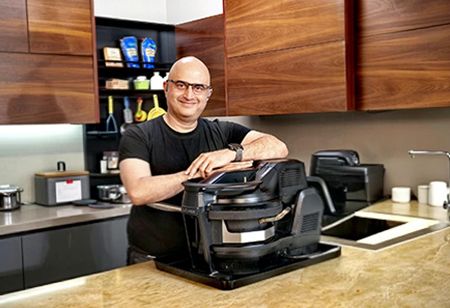
Fifteen years ago, when we were helping Jarden (a US-based company) introduce a range of mixer grinders in India, we realized how distinctly regional preferences shaped purchases. In the South, for instance, a durable, proudly displayed mixer—much like Sujata—was used multiple times a day to make chutneys and batters. Meanwhile, in Mumbai and the West, people mostly relied on compact blenders stashed away in cupboards. In the North, both large mixers and small blenders were kept side by side—one for heavy-duty shakes and cold coffees, another for simpler tasks.
Back then, relationships with local shopkeepers and advice from friends or family largely drove decisions. South India has for long controlled a sizeable proportion of the offline retail market for kitchen appliances, representing roughly 32.9 percent of India's share of the market in 2024, as per a report by IMARC Group. This is because this region highly prefers traditional, in-person consultations as well as recommendations based on word-of-mouth.
Yet today, my wife has the luxury of browsing platforms like Myntra or Amazon, ordering multiple products, and returning what doesn’t meet her standards, free of cost. That simple return policy has built enormous trust, encouraging people to experiment with buying online.
My own recent experience buying a double-door refrigerator reflects this shift: I relied on an AI-based tool to compare specs and reviews without physically visiting a store, and I don’t regret it. The convenience and time savings often make online shopping a clear winner in busy households. Even same-day or 12-minute deliveries—like the small elixir grinder I recently ordered on Blinkit—allow us to enjoy fresh shakes mere moments after the idea pops into our heads.
These changes mirror broader trends:
As per a report, the Indian household appliances market is expected to touch US$64.29bn in 2025, growing at a compound annual growth rate of 7.33 percent between 2025-2030. In the next 5 to 10 years, online appliance shopping in Tier 1 cities is anticipated to witness heavy growth, with estimates showing huge surge in consumer uptake. Similarly, Tier 2 cities are likely to register an appreciable increase in online purchases of appliances, fuelled by internet penetration and shifting consumer trends.
AR and VR demos and AI-driven recommendations will likely become commonplace, and there’s a growing demand for energy-efficient, eco-friendly options. Meanwhile, in the United States, where e-commerce is more mature, large retailers and niche D2C brands offer next-day deliveries and comprehensive warranties—models that India is steadily adopting.
Also Read: The Future of Indian Kitchen Appliances: Innovative Designs, Features, & Benefits
For millions of Indian consumers, the tipping point is reliability. If there’s confidence that a product can be returned or quickly serviced, many will click “Buy Now” without a second thought. And as connectivity, logistics, and trust in digital platforms continue to improve, the humble kitchen shelf, once ruled by local store-bought appliances, will increasingly make room for items delivered from a virtual cart, reshaping the retail landscape with every click.
About the author: With over 25 years of experience in product design and development, Sanandan have helped businesses transform their product ideas from a thought to a successful venture. He have also founded INVENTINDIA, a leading industrial design studio that has won multiple awards and recognition for its innovative solutions. He has been associated with five Kickstarter/Indiegogo campaigns and have manufactured 20 products for various customers.
We use cookies to ensure you get the best experience on our website. Read more...
Copyright © 2025 HomesIndiaMagazine. All Rights Reserved.